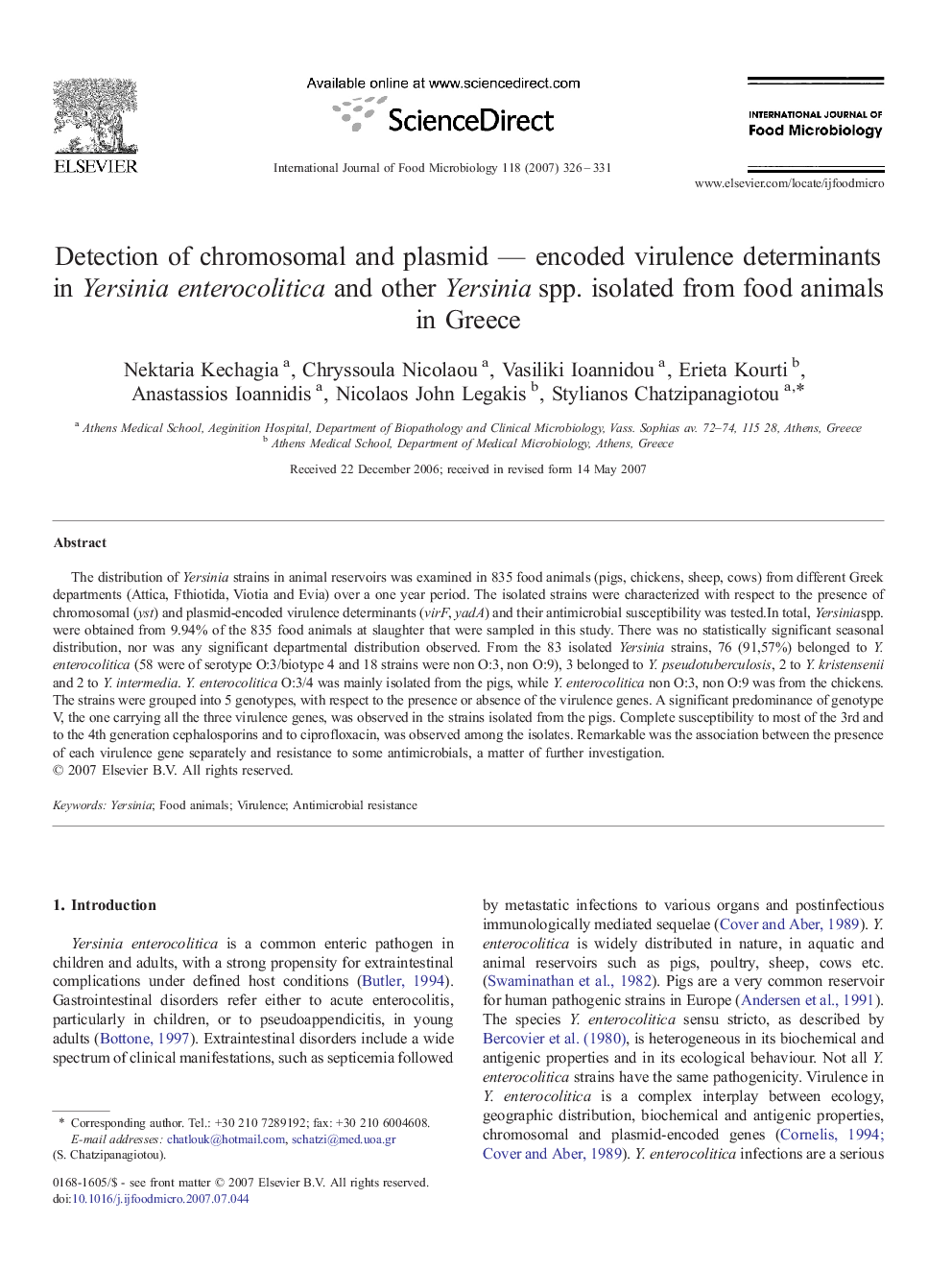| Article ID | Journal | Published Year | Pages | File Type |
|---|---|---|---|---|
| 4369714 | International Journal of Food Microbiology | 2007 | 6 Pages |
The distribution of Yersinia strains in animal reservoirs was examined in 835 food animals (pigs, chickens, sheep, cows) from different Greek departments (Attica, Fthiotida, Viotia and Evia) over a one year period. The isolated strains were characterized with respect to the presence of chromosomal (yst) and plasmid-encoded virulence determinants (virF, yadA) and their antimicrobial susceptibility was tested.In total, Yersiniaspp. were obtained from 9.94% of the 835 food animals at slaughter that were sampled in this study. There was no statistically significant seasonal distribution, nor was any significant departmental distribution observed. From the 83 isolated Yersinia strains, 76 (91,57%) belonged to Y. enterocolitica (58 were of serotype O:3/biotype 4 and 18 strains were non O:3, non O:9), 3 belonged to Y. pseudotuberculosis, 2 to Y. kristensenii and 2 to Y. intermedia. Y. enterocolitica O:3/4 was mainly isolated from the pigs, while Y. enterocolitica non O:3, non O:9 was from the chickens. The strains were grouped into 5 genotypes, with respect to the presence or absence of the virulence genes. A significant predominance of genotype V, the one carrying all the three virulence genes, was observed in the strains isolated from the pigs. Complete susceptibility to most of the 3rd and to the 4th generation cephalosporins and to ciprofloxacin, was observed among the isolates. Remarkable was the association between the presence of each virulence gene separately and resistance to some antimicrobials, a matter of further investigation.
